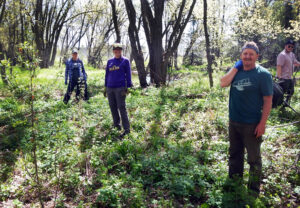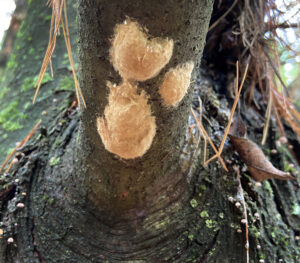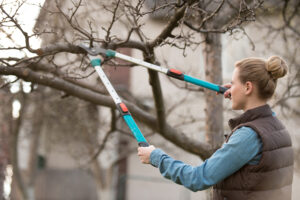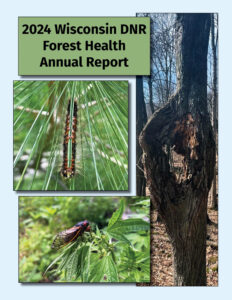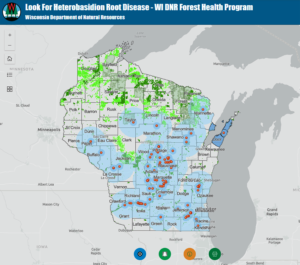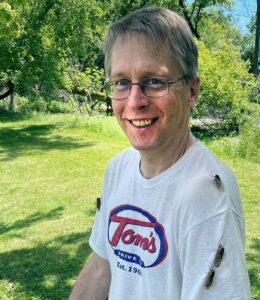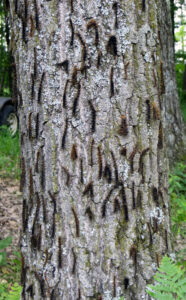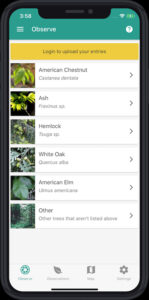
Phomopsis galls are plentiful on branches of a 120-year-old red oak tree in Clark County, Wisconsin, in 2024. / Photo Credit: Kris Wimme, retired Wisconsin DNR forester
By Alex Hornung, DNR Forest Health Specialist, Plover
Alexandra.Hornung@wisconsin.gov
It is the perfect time of year to be on the lookout for galls – woody growths or swellings on tree branches that are typically oblong in shape and of varying sizes.
They can often be found on small branches, but occasionally they can affect large branches or even the main stem. Galls can occur for several reasons, ranging from fungi to bacteria to insect activity.
One type, Phomopsis gall, can be particularly impressive to see. Galls formed due to this native fungus mostly occur on oak, hickory and maple trees in Wisconsin.
Continue reading “A Wonderful Winter Display: Phomopsis Galls”

